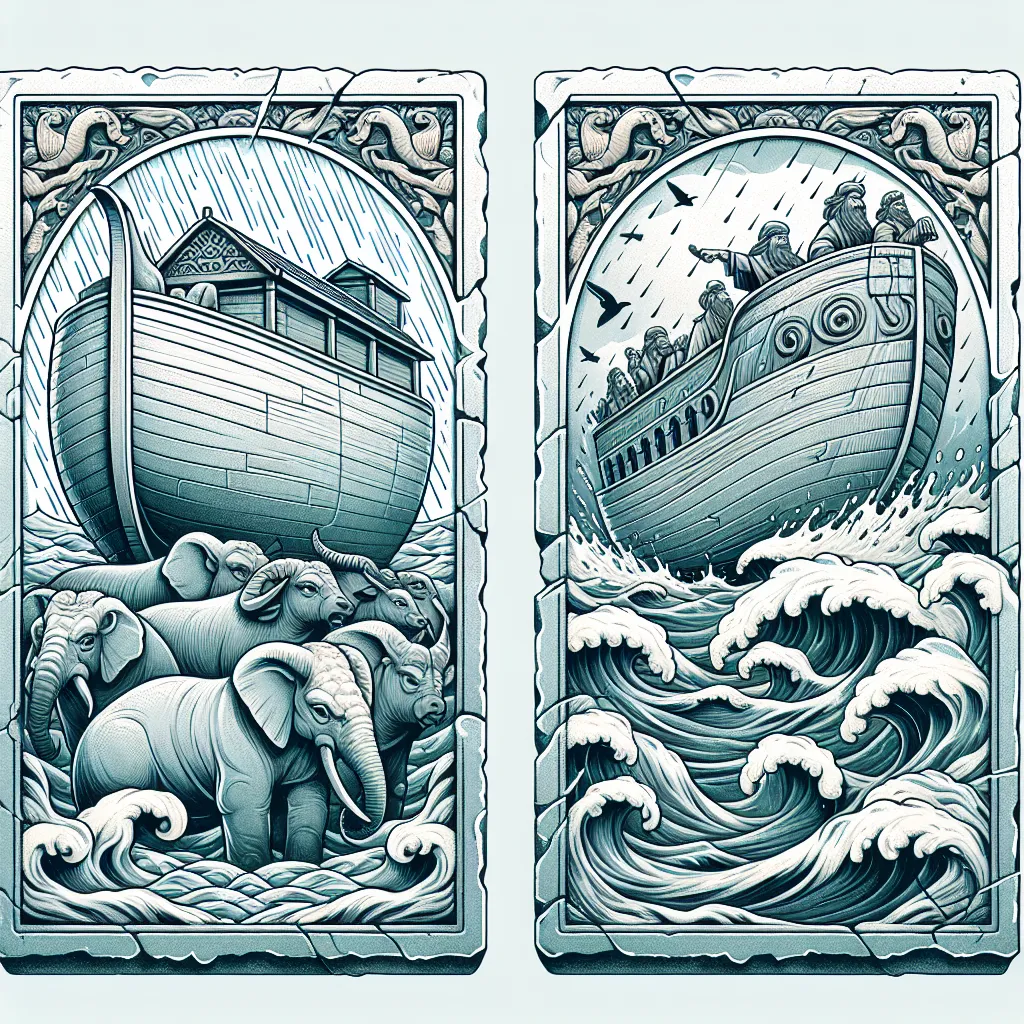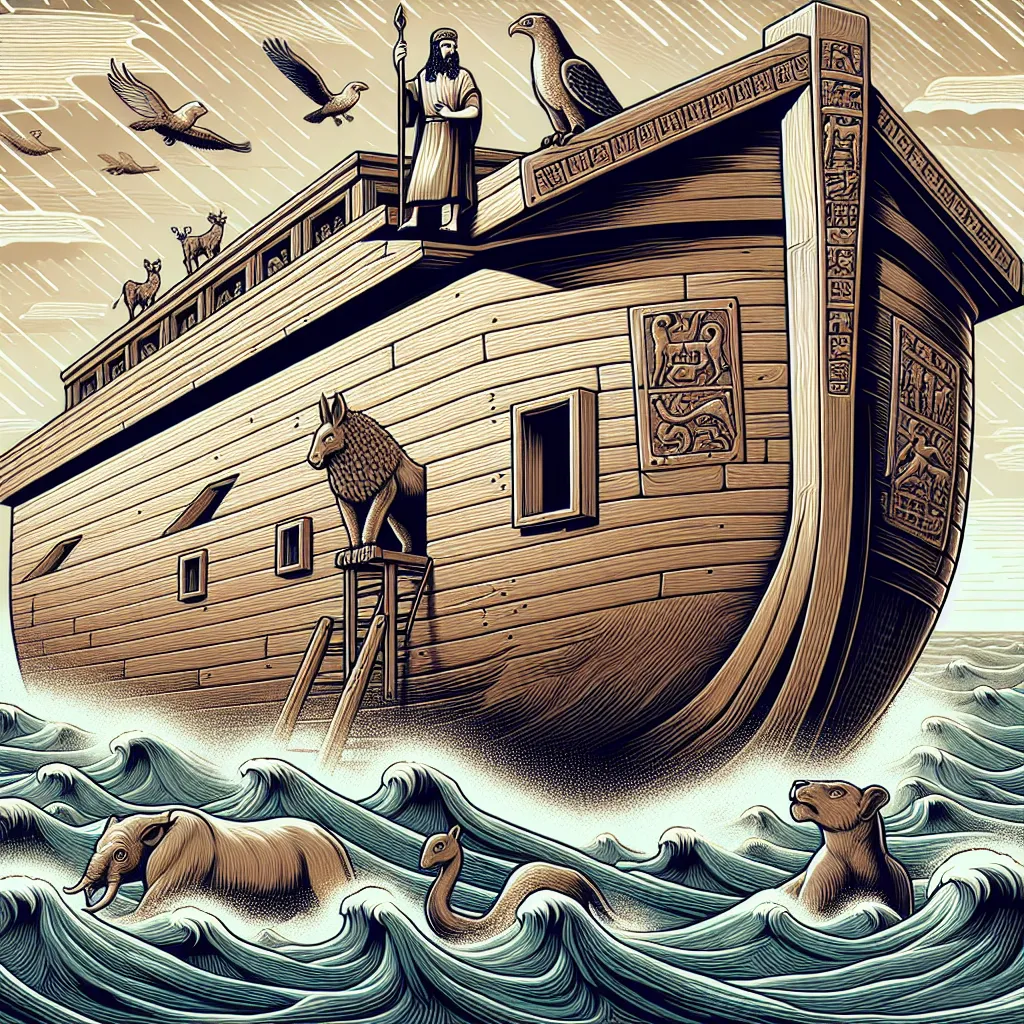Ask AI on The Internet
Question: noahs ark copied the Sumerian flood story with utnapishtim
The story of a great flood is indeed a common motif found in various ancient cultures around the world. The Sumerian flood myth, featuring a character named Utnapishtim (called Ziusudra in Sumerian texts), is one of the earliest known versions of such a narrative. This story is part of the broader Epic of Gilgamesh, which dates back to around 2100 BCE. The Biblical story of Noah's Ark, as recounted in the Book of Genesis, also describes a great flood sent by God to cleanse the world, with Noah being instructed to build an ark to save his family and pairs of every animal species. This story is believed to have been written down more than a millennium later, around the 6th century BCE, although it may have been based on older oral traditions. Because the Sumerian story predates the Biblical account by many centuries, some scholars suggest that the Hebrew authors of the Genesis flood narrative may have been influenced by older Mesopotamian myths, including the story of Utnapishtim. Trade, conquest, and cultural exchange could have facilitated the transfer and adaptation of these stories across civilizations. However, it is also possible that similar flood narratives arose independently in various cultures due to the widespread human experiences of catastrophic floods, which were common in ancient river valley civilizations such as those in Mesopotamia. While the similarities between the stories are striking—both involve divine beings, a righteous man, a large boat, and a great flood—the differences in details and contexts reflect the distinct religious and cultural settings from which they emerged.
Think your answer is better than the AI's? Post it below.
Other Most Relevant Posts:
 Ask AI: the bible copied alot of the much older surroundings pagan myths and re spun it's own yarn . it also uses a lot of plato
Ask AI: the bible copied alot of the much older surroundings pagan myths and re spun it's own yarn . it also uses a lot of plato
 Ask AI: the bible copied alot of the much older surrounding pagan myths and re spun it's own yarn . it also uses a lot of plato
Ask AI: the bible copied alot of the much older surrounding pagan myths and re spun it's own yarn . it also uses a lot of plato
Question Tags
If you want your question answered by an AI, click here.





Post your own comment: